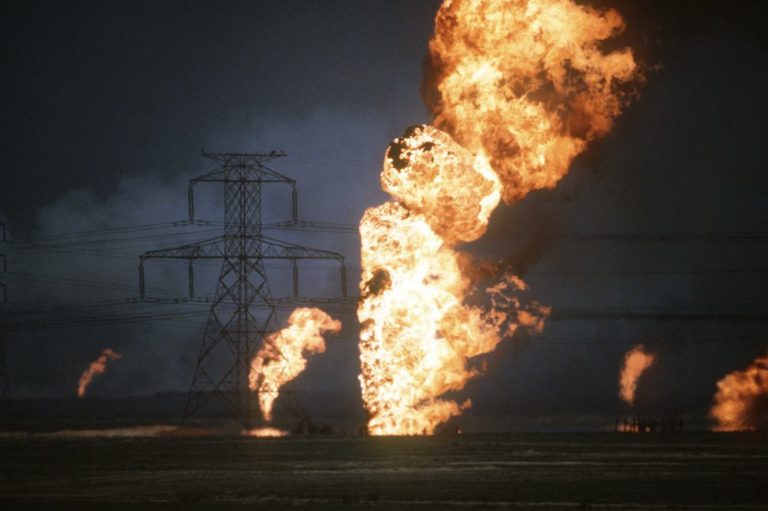Oil Well Fires in Kuwait

CCK Law: Our Vital Role in Veterans Law
During Operation Desert storm in 1991, Iraqi military forces set fire to over 600 oil wells in Kuwait, creating a massive environmental hazard. The fires were started between January and February of 1991 and continued burning for more than eight months until the last fire was extinguished in November of that year.
Why Were the Oil Well Fires Started?
An initial conflict started between Iraq and Kuwait in early 1990, as Iraq began accusing Kuwait of stealing Iraqi petroleum through slant drilling. This resulted in the seven-month invasion of Kuwait by Iraqi forces led by Saddam Hussein. Iraq’s invasion and refusal to withdraw despite orders from the United Nations, led to military intervention by U.S. and coalition troops. These events became known as the Persian Gulf War. Two main operations were conducted during the Persian Gulf War: Operation Desert Shield from August 2, 1990 to January 16, 1991 and Operation Desert Storm from January 17, 1991 to April 6, 1991. Ultimately, this conflict ended in the expulsion of Iraqi forces from Kuwait. However, while retreating from Kuwait, the Iraqi forces inflicted one last attack on the country by igniting oil well fires, significantly impacting both Kuwait’s economy and petroleum industry.
Health Concerns and Environmental Impact
It is estimated about 1 to 1.5 billion barrels of oil were released into the environment as a result of the fires. Specifically, about 25 to 40 million barrels ended up spread across the desert, while 11 million barrels ended up in the Persian Gulf. The oil well fires produced layers of soot and oil that fell from the sky and then mixed with sand and gravel, covering about 5% of Kuwait’s landscape. Additionally, the fires created plumes of smoke, containing a hazardous mixture of emissions and particulate matter including but not limited to carbon monoxide, carbon dioxide, sulfur dioxide, nitrogen oxides, volatile organic hydrocarbons, hydrogen sulfide, and acidic gases. Furthermore, a number of these emissions are carcinogenic, or cancer-causing, and therefore dangerous to human health. These clouds of smoke often remained low to the ground, surrounding U.S. military personnel. Ultimately, it required the help of 11,450 workers from 38 different countries to extinguish the oil well fires. Approximately 90% of the fires were put out using seawater. This devastation resulted in substantial environmental and economic damages.
VA Benefits for Oil Well Fire Exposure
VA does recognize that the oil well fires presented an environmental hazard for troops. In an effort to understand more about potential health-related effects of exposure to oil well fires, VA has established the Airborne Hazards and Open Burn Pit Registry in which Gulf War veterans provide information about their health. Furthermore, VA acknowledges that particles from oil well fires may cause acute or short-term health effects including: skin irritation; runny nose; cough; shortness of breath; eye, nose, and throat irritation; and aggravation of sinus and asthma conditions. However, VA maintains that research has not shown consistent and definitive long-term health effects from oil well fire smoke exposure.
While VA does not report a connection between oil well fires and long-term health outcomes, Gulf War veterans may be eligible for presumptive service connection for certain medically unexplained chronic multisymptom illnesses (MUCMI) and undiagnosed illnesses.
About the Author
Share this Post
